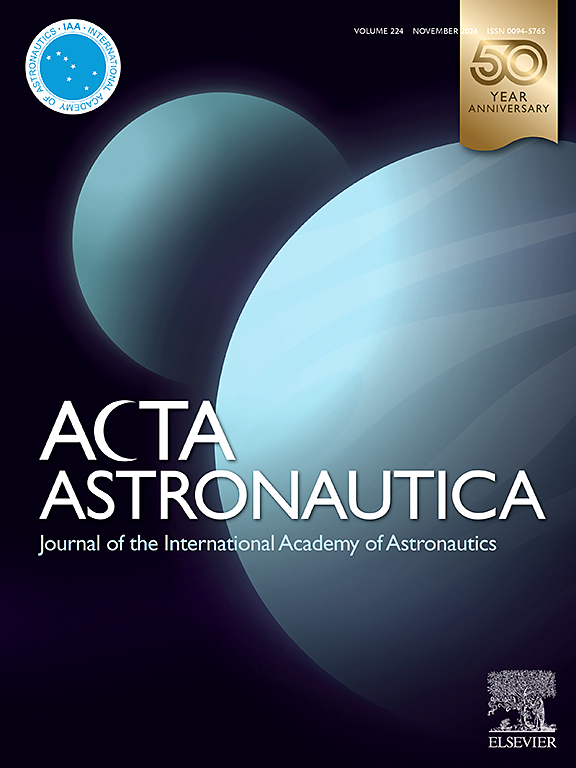Evaluation of the influence of surface roughness on the deterioration of heat transfer in methane rocket engine cooling systems
IF 3.1
2区 物理与天体物理
Q1 ENGINEERING, AEROSPACE
引用次数: 0
Abstract
The need for advanced propulsion systems for space exploration has led to extensive research into the cooling mechanisms of rocket engines. This study investigates using methane as a coolant under transcritical temperature and supercritical pressure conditions, focusing on understanding heat transfer deterioration. The Reynolds-Averaged Navier–Stokes equations are solved numerically for pure methane flowing in a high aspect ratio cooling channel for different operating conditions. The GERG-2008 equation of state and extended corresponding states models are used to calculate the properties of methane. The Simulation results showed that the optimum height of wall roughness size is directly linked to the applied heat flux and mass flow rate for each specific operating pressure. The surface roughness of the cooling channels must be carefully designed and manufactured for each specific supercritical operating pressure to maximize heat transfer and minimize pressure drop. This research improves the cooling system designs for rocket engines, which could lead to more efficient and reliable propulsion systems for future space missions.

求助全文
约1分钟内获得全文
求助全文
来源期刊

Acta Astronautica
工程技术-工程:宇航
CiteScore
7.20
自引率
22.90%
发文量
599
审稿时长
53 days
期刊介绍:
Acta Astronautica is sponsored by the International Academy of Astronautics. Content is based on original contributions in all fields of basic, engineering, life and social space sciences and of space technology related to:
The peaceful scientific exploration of space,
Its exploitation for human welfare and progress,
Conception, design, development and operation of space-borne and Earth-based systems,
In addition to regular issues, the journal publishes selected proceedings of the annual International Astronautical Congress (IAC), transactions of the IAA and special issues on topics of current interest, such as microgravity, space station technology, geostationary orbits, and space economics. Other subject areas include satellite technology, space transportation and communications, space energy, power and propulsion, astrodynamics, extraterrestrial intelligence and Earth observations.
 求助内容:
求助内容: 应助结果提醒方式:
应助结果提醒方式:


